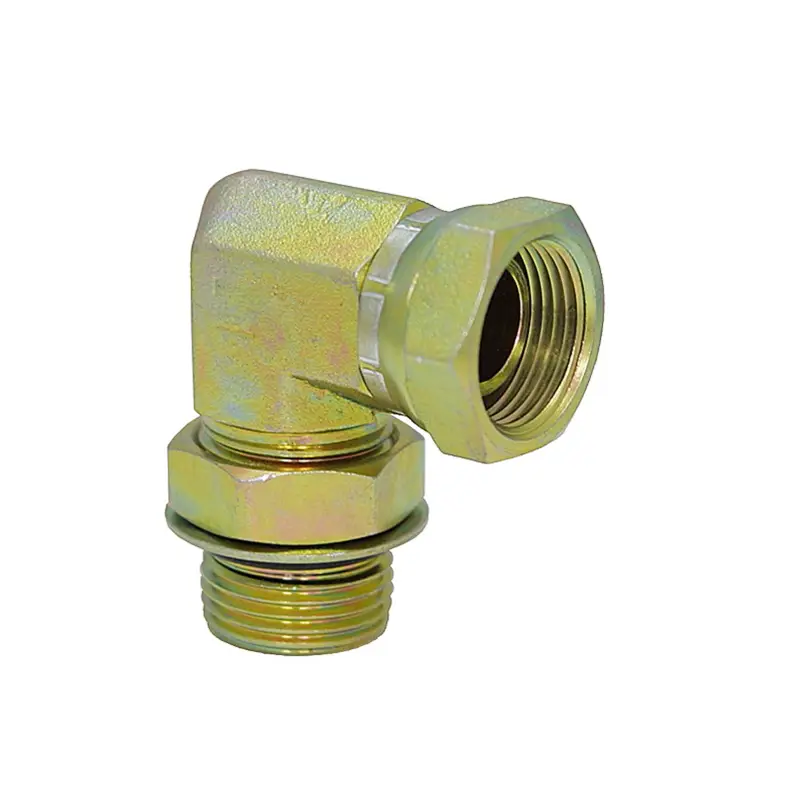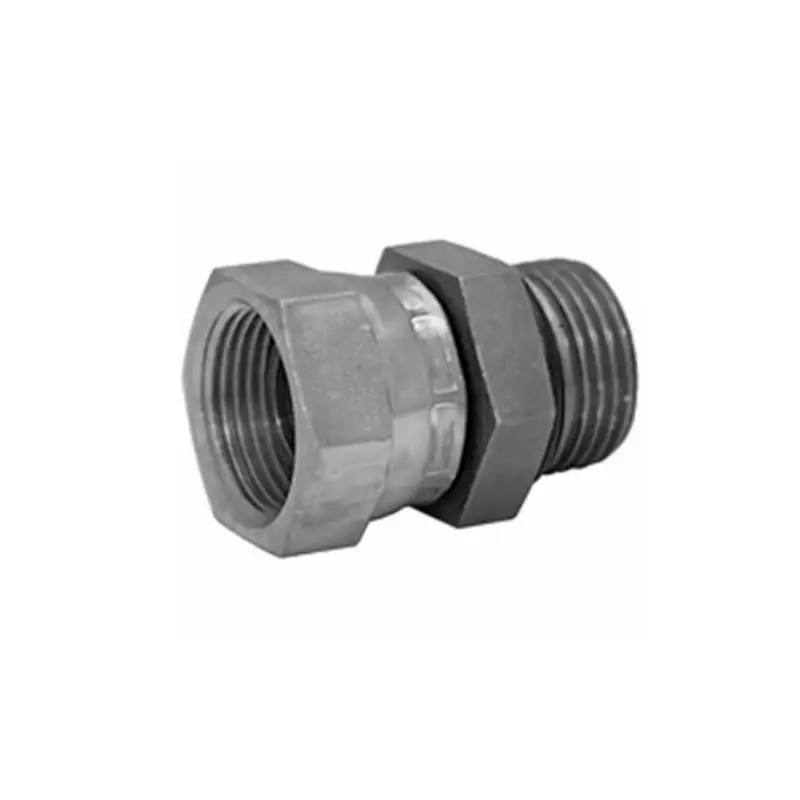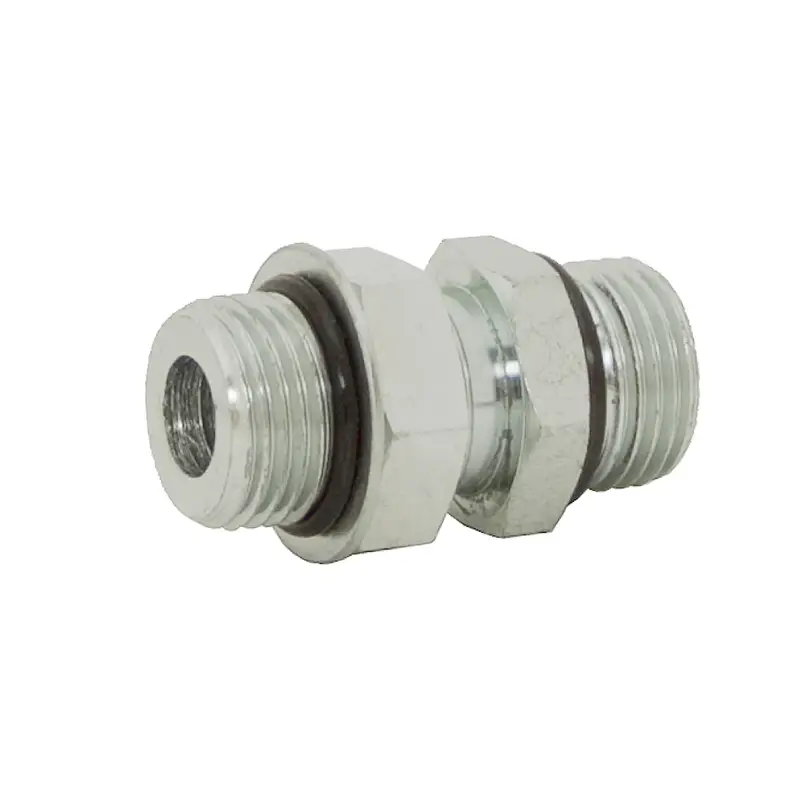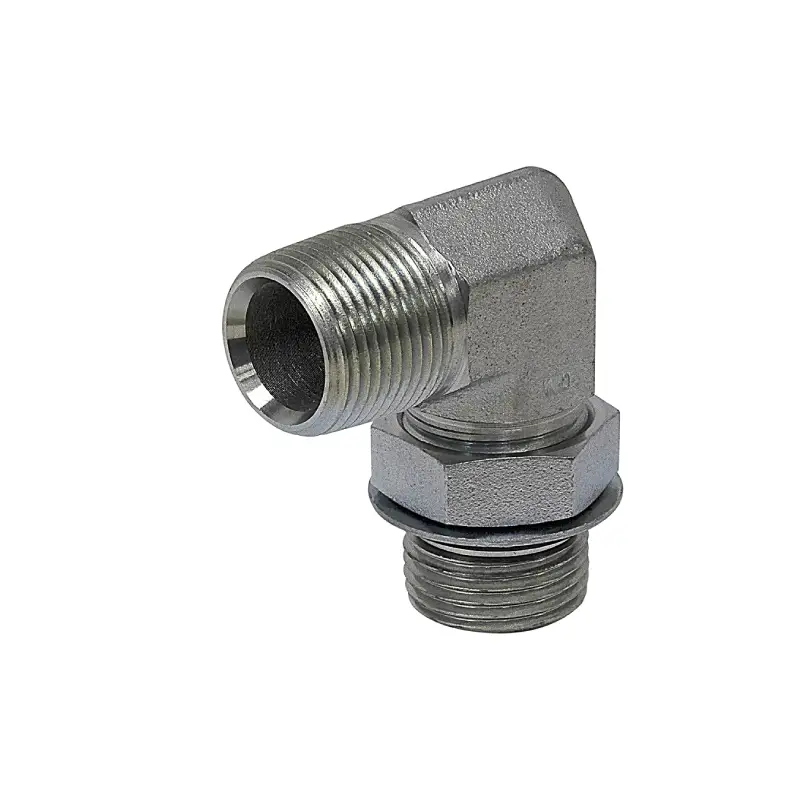We offer a comprehensive range of SAE hydraulic fittings, meticulously engineered to meet the stringent standards of the Society of Automotive Engineers. Our selection includes popular types like JIC (37° flare), O-Ring Face Seal (ORFS), and O-Ring Boss (ORB) fittings, ensuring reliable, leak-free connections for diverse high-pressure hydraulic applications. Designed for durability and performance, our SAE fittings are manufactured from high-quality materials, providing robust solutions for your industrial and mobile equipment needs.
Offer your clients unparalleled quality and reliability with our wholesale SAE hydraulic fittings. Designed to meet rigorous industry standards, our JIC, ORFS, and ORB fittings ensure secure, leak-free connections for every hydraulic system. Partner with us to provide durable, high-performance components that will truly delight your clientele and build lasting trust.
While standard SAE fittings are typically made from carbon steel or stainless steel, we can customize the material to specialized alloys. This might be necessary for extreme corrosive environments, very high-temperature applications, or situations requiring non-magnetic properties. Our custom materials ensure enhanced chemical compatibility, improved strength-to-weight ratios, or unique thermal expansion characteristics crucial for critical performance.
We can highly customize the physical shape and the arrangement of ports on an SAE fitting. This includes designing fittings with specific bend angles, unique multi-port manifolds, or integrated features for sensors or specialized valves. Our custom body geometries are often critical for fitting into constrained spaces, optimizing fluid flow paths, or consolidating multiple connections into a single, compact component for efficiency and simplified assembly.
Although SAE standards define specific thread types (like UN/UNF for JIC, ORFS, ORB), we can implement slight deviations or combinations for unique interfaces. This might include modifying thread lengths, incorporating non-standard pitches for specialized equipment, or integrating unique thread forms to connect proprietary components where standard SAE threads might not precisely fit, ensuring perfect mechanical engagement and sealing.
Beyond standard zinc plating, we can apply specialized surface treatments or coatings to SAE fittings. This could include enhanced corrosion-resistant coatings for harsh marine or chemical environments, low-friction coatings for specific applications, or unique passivation processes. These tailored surface treatments extend the fitting’s lifespan, improve its performance under specific conditions, and can even offer aesthetic benefits.

We offer a robust selection of stainless steel SAE hydraulic fittings, engineered for superior corrosion resistance and extreme durability. Ideal for demanding environments like marine, chemical, and food processing applications, our range includes JIC, ORFS, and ORB types. These high-grade stainless steel fittings ensure reliable, leak-free performance, providing your hydraulic systems with maximum longevity and unwavering integrity in challenging conditions.

We offer a comprehensive selection of SAE 6 hydraulic fittings, designed to meet the rigorous SAE J514 and other relevant standards. These fittings, which typically correspond to 3/8″ nominal hose or tube size, are crucial for medium to high-pressure hydraulic applications. Our range includes popular SAE 6 configurations like JIC 37° flare and O-Ring Boss (ORB), ensuring secure, leak-free connections.

We offer a specialized selection of SAE 8 hydraulic fittings, designed for robust performance in demanding hydraulic systems. The “-8″ dash size typically denotes a 1/2-inch nominal size (often with 3/4″-16 ORB threads or 3/4”-16 JIC threads, depending on the specific SAE standard). Our range ensures precise fit and reliable sealing for various applications, including high-pressure lines. These fittings are manufactured to stringent SAE standards, guaranteeing compatibility and durability.

We specialize in providing a comprehensive selection of SAE hydraulic fittings, crucial for various fluid power applications. Our inventory covers the full spectrum of SAE standards, including SAE 10, ensuring precise compatibility and optimal performance for your hydraulic systems. These fittings are manufactured with robust materials and precise engineering, guaranteeing secure, leak-free connections tailored to your equipment’s specific requirements.

We provide a wide selection of SAE 12 hydraulic fittings, meticulously designed for systems requiring a 3/4-inch nominal hose size, referencing the -12 dash size. Our inventory includes common SAE types such as JIC (37° flare), ORFS (O-Ring Face Seal), and O-Ring Boss (ORB), ensuring robust, leak-free connections for high-pressure applications. These fittings are manufactured to precise SAE standards, guaranteeing compatibility and superior performance across various hydraulic machinery.

We offer a wide selection of SAE J514 hydraulic fittings, widely recognized for their 37-degree flare design and robust performance in high-pressure applications. Our inventory includes various configurations, ensuring reliable, leak-free connections for diverse industrial, mobile, and automotive hydraulic systems. Manufactured to exacting SAE standards, these fittings provide durability and compatibility, making them a trusted choice for critical fluid power connections.
In the field of hydraulic fittings, SAE stands for the Society of Automotive Engineers. SAE is a global association of engineers and technical experts that develops and maintains standards for various industries, including automotive, aerospace, and off-highway equipment.
These SAE standards ensure compatibility, reliability, and safety for components like hydraulic fittings, allowing for interchangeability between products from different manufacturers and promoting best practices in fluid power systems.
Yes, customizing SAE hydraulic fitting sizes is indeed possible, though it’s typically done by specialized manufacturers for specific applications rather than being a standard off-the-shelf service.
While SAE standards define a wide range of common sizes and types (like JIC, ORFS, and ORB), there are instances in unique or highly specialized hydraulic systems where a standard fitting size or configuration simply won’t meet the precise requirements.
Manufacturers with advanced CNC machining capabilities and engineering expertise can produce custom SAE fittings. This process involves designing and manufacturing fittings with non-standard dimensions, unique geometries, specific material compositions, or specialized features to integrate seamlessly into a particular hydraulic circuit.
Such customization is often necessary for OEM (Original Equipment Manufacturer) applications, prototypes, or systems with severe space constraints or extreme performance demands that cannot be met by standard components.
CPE Hoses: